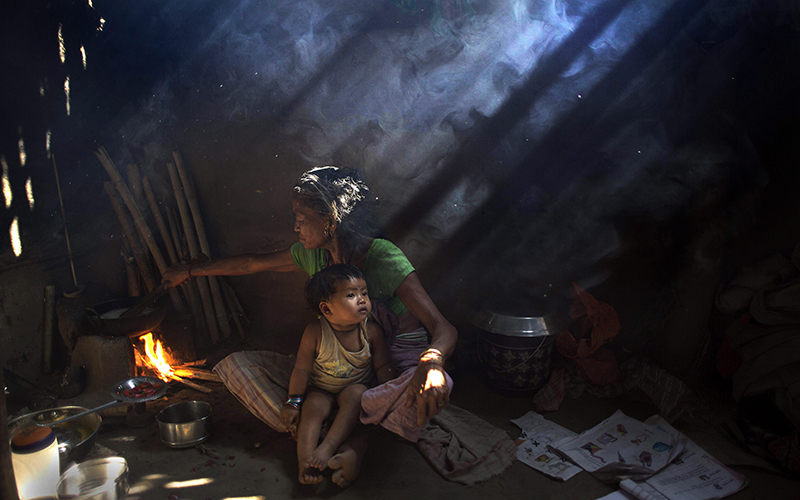PATNA, India – With sizzling temperatures claiming more than 300 lives this month in India, officials said they were banning daytime cooking in some parts of the drought-stricken country in a bid to prevent accidental fires that have killed nearly 80 more people.

The eastern state of Bihar this week took the unprecedented step of forbidding any cooking between 9 a.m. and 6 p.m., after accidental fires exacerbated by dry, hot and windy weather swept through shantytowns and thatched-roof houses in villages and killed 79 people. They included 10 children and five adults killed in a fire sparked during a Hindu prayer ceremony in Bihar’s Aurangabad district last week.
People were instead told to cook to night.
Hoping to prevent more fires, officials have also barred burning spent crops or holding religious fire rituals. Anyone defying the ban risks up to a year in jail.
READ MORE: Heat wave in India kills at least 160
“We call this the fire season in Bihar,” Vyas, a state disaster management official who goes by one name, said Friday. “Strong, westerly winds stoke fires which spread easily and cause great damage.”
Much of India is reeling under a weekslong heat wave and severe drought conditions that have decimated crops, killed livestock and left at least 330 million Indians without enough water for their daily needs.
Rivers, lakes and dams have dried up in parts of the western states of Maharashtra and Gujarat, and overall officials say that groundwater reservoirs are at just 22 per cent capacity.

Get breaking National news
In some areas, the situation is so bad the government has sent tankers of water for emergency relief. Monsoon rains are still weeks away, expected to start only in June.
At least 300 people have died of heat-related illness this month, including 110 in the state of Orissa, 137 in Telangana and another 45 in Andhra Pradesh where temperatures since the start of April have been hovering around 44 degrees Celsius.
READ MORE: Thailand grapples with heat wave as average temperature hovers above 40°C in April
That’s about 4-5 degrees Celsius hotter than normal for April, according to state meteorological official Y.K. Reddy. He predicted the situation would only get worse in May, traditionally the hottest month in India.
The southern state of Andhra Pradesh is running ads on TV and in newspapers urging people to stay indoors during the hottest hours. Construction and farm labourers are advised to seek shade when the sun is directly overhead.
Huge numbers of farmers, meanwhile, have migrated to nearby cities and towns in search of manual labour, often leaving elderly and young relatives behind in parched villages.
This is the second consecutive year southern India has suffered from a deadly heat wave, after some 2,500 people died in scorching temperatures last year.
Though heat waves are common during Indian summers, authorities have done little to ensure water security or prepare urban populations for the risks.
READ MORE: Scientific panel finds climate change fingerprints in wild weather
This year, Orissa’s capital of Bhubaneshwar and Maharashtra’s city of Nagpur joined Gujarat’s Ahmedabad in launching a heat wave program to educate people on how to stay cool, provide shelters and train medical workers on dealing with heat-related illnesses like sun stroke and dehydration. But most cities and states lack such programs.
This week, more than 150 leading Indian economists, rights activists and academics expressed their “collective anxiety about the enormous suffering of the rural poor” in an open letter to Prime Minister Narendra Modi.
The letter says the official response to the crisis has been “sadly listless, lacking in both urgency and compassion,” and urges Modi to restore funding for a government program guaranteeing 100 days of paid work a year for the poor and unemployed.
While the monsoon is not expected until June, weather experts hope there would be brief spells of light rain sooner.
“The effect would last a few days, before temperatures start rising again,” Indian Meteorological Department spokesman B. P. Yadav said.







Comments